As usual, we’re rather behind in our blogging. Sorry! We’re currently in La Paz, struggling to breathe at 4000m and blogging because Bolivia has judicial elections today and basically EVERYTHING in the country stops working for a whole day. But this blog post is not about Bolivia, it is about the continental USA where we focused just on the western and mountain states.
We’ve been to so many parks in the USA now so we thought we’d do a mini-summary of each one. We’ve split this into two parts, firstly our trip north to Seattle, and then our return trip south. Since we are both analysts, we naturally begin with some caveats. This only covers the western part of the continental USA, and obviously only the places that we went to on this trip. Yellowstone and the Grand Tetons are two epic parks that will not feature for this reason, but these are quite possibly our favourite parks. Also, we review things from a view-junkie’s perspective, so forest walks to a quaint waterfall will score poorly. Your mileage may vary.
SEQUOIA AND KINGS CANYON
Sequoia has the largest trees by volume in the world. Considering that these are easily accessed by road, it’s worth visiting even if you’re not a big tree fan.
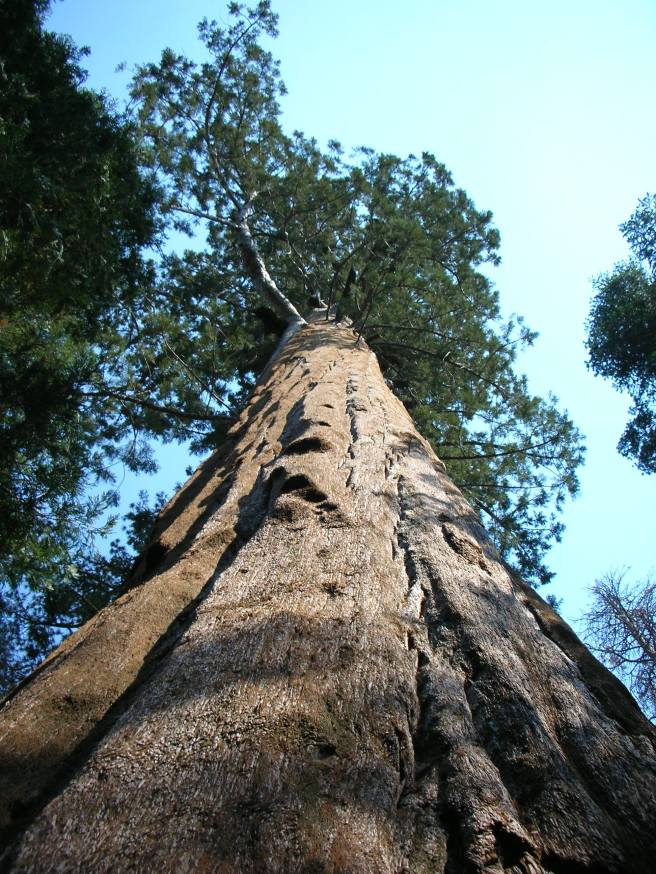
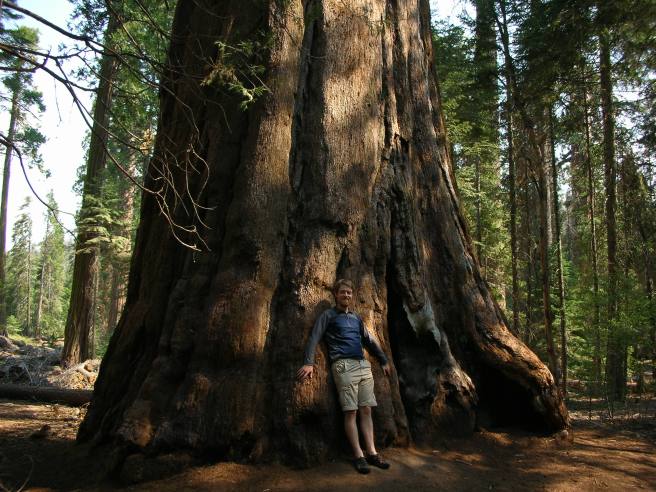
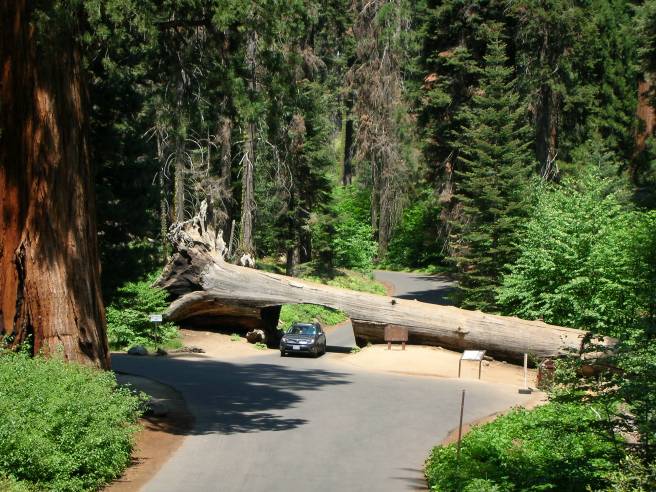
But there is more to Sequoia than big trees. Like it’s more famous neighbour Yosemite, Sequoia has lots of exposed grey granite hills which make for great hiking and enjoyable scenery.

But the real gem is Kings Canyon, which adjoins Sequoia. The drive in itself is about 90 minutes of stellar views (and slightly precipitous corners) and the last section follows an impressively powerful whitewater river for about 30 minutes. The destination has meadows to stroll in and hills to hike up (though we cheated on the largest hill and drove up the 4WD track most of the way!).

YOSEMITE
Definitely one of America’s most popular parks, but most visitors will only visit the valley. DO NOT do what we did and arrive at 10:30am on a Saturday, to have to wait 1 hour in traffic to find a parking space. That was horrible. Arrive early. The valley itself is impressive, albeit quite smokey when we visited due to nearby wildfires.
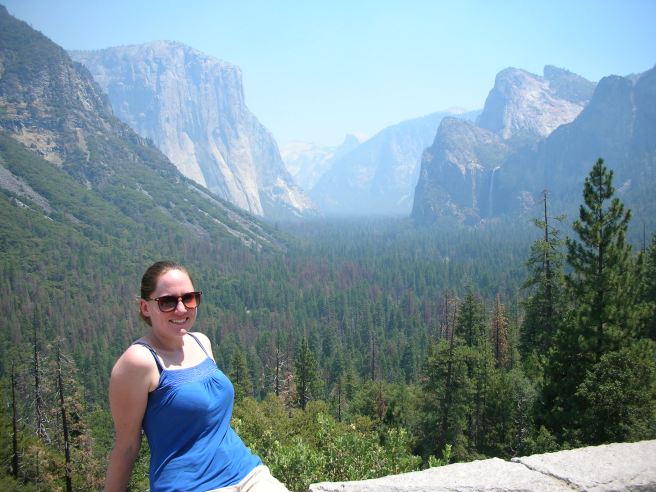
You can walk all around the nearby hills. The best view may be that from Sentinel Dome, where you get a good view of the famous Half Dome:
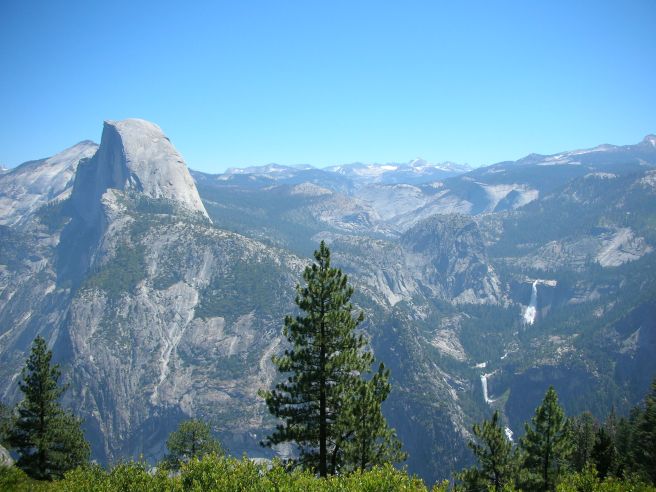
Climbing Half Dome is a fair challenge and not for the unfit or faint-hearted. It also takes lots of planning as there is a lottery system to get tickets, and we had to enter half a dozen times before we had any luck. We started hiking before first light for that long but very interesting day. The famous part of the hike is the cables at the end that allow non-climbers to safely reach the summit up a smooth granite slope at about 45 degrees, and the views at the top were awesome!


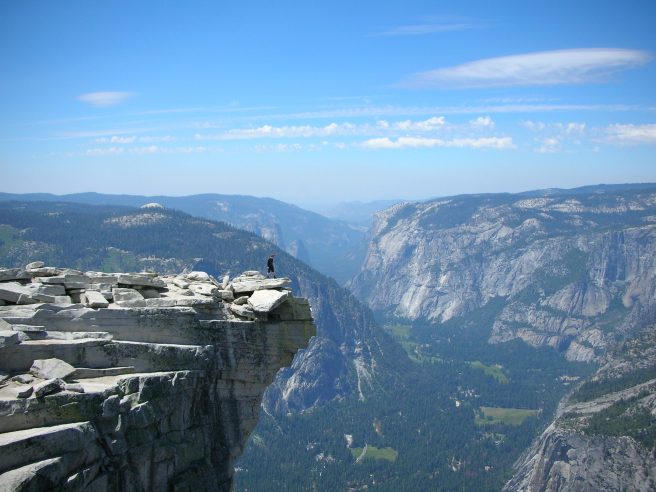
On other days, the wildfires really did make walking kinda pointless.

On one of these smokey days we decided to volunteer in the park which involved learning about and removing some invasive plants. Many parks have such volunteering opportunities and they can be quite fun.
Yosemite is also the self-styled world capital of rock climbing. We gave it a go. Climbing on granite is hard on the hands, since the rock is abrasive and you are often climbing using cracks rather than rock protrusions/ledges, but definitely a good experience nonetheless.

North of Yosemite is the Tuolumne Meadows area, which is higher in elevation and so more alpine tundra than forest. This suits us, because this means fewer trees and so better views whilst walking. But it is far from barren:

In this area we did one of our favourite hikes of all time, to Gaynor Lakes. The lakes themselves are pretty and very easy to get to, but the walk was so good because we could extend it and explore the hills around, leading to some glorious views:


MONO LAKE AREA
As you drive east out of Tuolumne Meadows you drive right by Mono Lake. We’d not planned to visit this, but our lodge in Tuolumne had been damaged by the severe snowfall the winter before and so was not opening for the season, giving us a few spare days to see Mono Lake and the area. We’re glad that we did see this. Mono Lake is a salt lake where various large rivers ultimately meet their end without ever making it to the sea.

We went for a swim in it, and could float fairly well (but not as well as we could in the Great Salt Lake beside Salt Lake City later in the trip). The lake had a bizarre ecosystem, containing two main organisms that the eye can see: brine shrimp and alkali flies. These two provide migrating birds with food when they make a pit stop during their travels and the flies also form a layer around the edge of the lake that fly up into a harmless black cloud when you get near which is quite cool to experience. The lake also has strange rock formations caused by petrified springs:

Following a ranger’s advice, we also found some other mountains nearby which, by virtue of not being in a named park, were almost devoid of other hikers. The flip side of that is that it was also devoid of a path for much of the time!


LASSEN VOLCANIC NATIONAL PARK
This is definitely one of the lesser visited parks, but there is some good stuff to see here. We did two larger summit walks, Lassen Peak being particularly memorable because there were millions of butterflies migrating across the upper reaches of the mountain and flying all around us as we walked (every black spot is probably a butterfly).
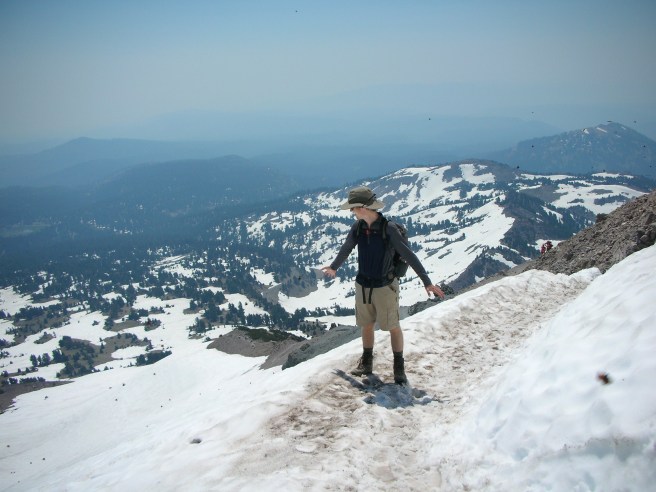
There we also some pretty semi-iced lakes to see:
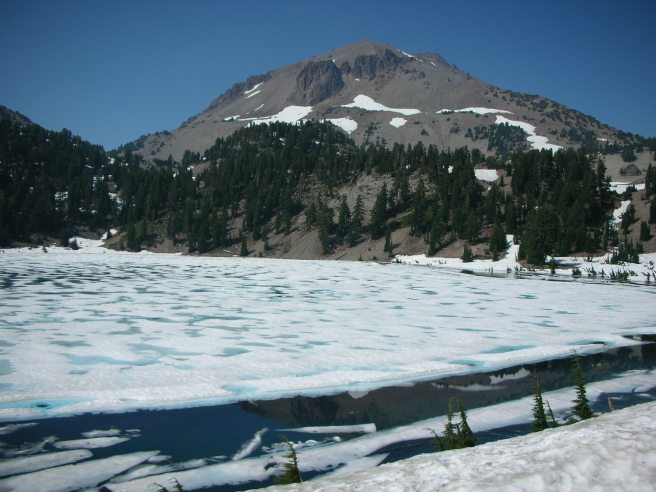
And some snow slopes to toboggan down:
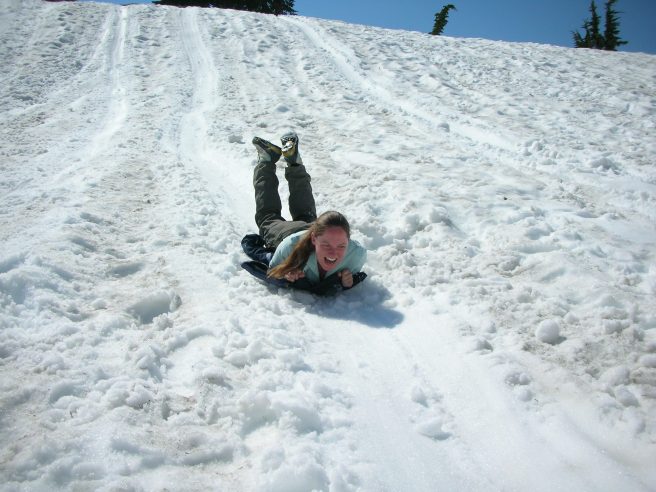
There are various smaller-scale thermal features to visit on a chilled out evening walk…

…where the ground was often coloured in interesting ways:
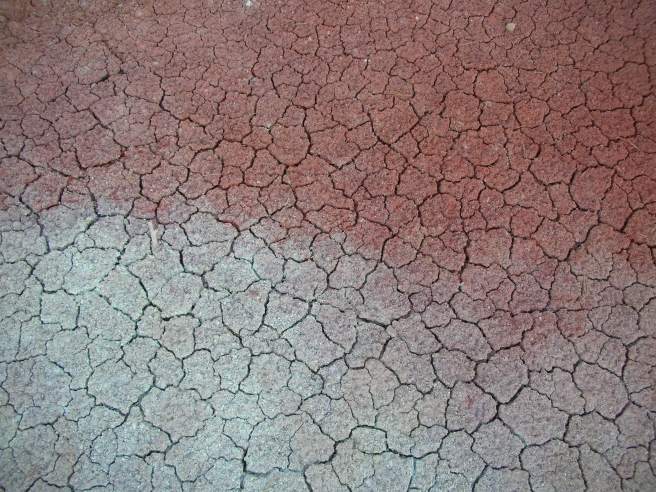
It wasn’t all about peaks and thermal features though. Some of the hikes were memorable for the myriad of flowers along the way:
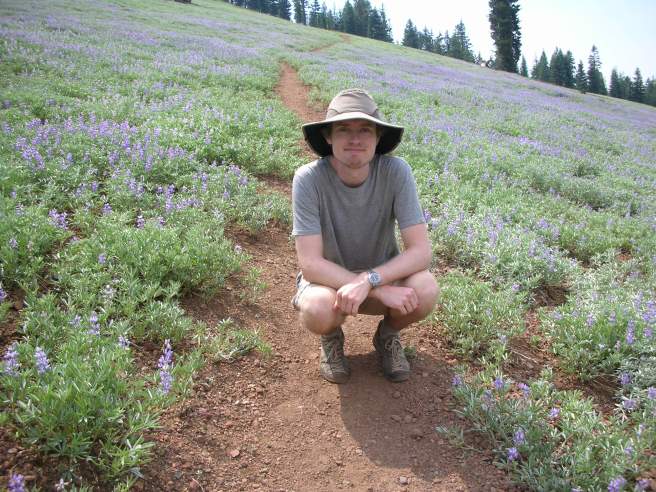

But, let’s be honest, our favourite hike was probably our other summit hike 🙂

CRATER LAKE
Crater lake, no surprises, is a crater with a lake in it. It’s pretty huge and you can (normally) drive around it in about 3 hours. We say “normally” because half of this park was shut when we arrived due to (you guessed it…) wildfires!

Since the air was beyond safety limits we cancelled our accommodation and made a speedy getaway north (because there wouldn’t be any wildfires there, right?).
MT HOOD
Mt hood is a ski area and we’d planned to go up the cable cars to see the scenery, but the smoke changed our minds. Unusually for us, the real highlight of this visit turned out to be staying at the nice but eerie Timberline Hotel, which was the setting for the film The Shining.

Next door to Mt Hood is the Colombia River Gorge which we thought we’d swing by on our way out. This is a destination for waterfalls, some hiking, and (on the day we visited) seemingly half of the residents of Oregon state in their cars all trying to find parking spaces. With the hikes too smokey and the roads too insane, we were glad to escape!
MT ST HELENS
This place is definitely worth a quick visit. We did a half-day hike along a ridge with views of Mt St Helens (again, sorry about the smoke).

The end of the hike was surprising: The last big eruption (maybe in 1980) of the mountain had decimated the forests in the vicinity, and the carcasses of their trunks still choke up a huge lake near the foot of the volcano, just about making it look like you could walk over the water on the wood!

RAINIER
This is justifiably one of the more popular parks and we easily spent over a week here. Everything is centred around the massive Mt Rainier. We started in “Paradise” in the south which has beautiful meadows and mountain views:


Apart from some other hikes in this area, we also took part in a morning of volunteering to help repair the paths which was good fun.
The other main place to visit is called “Sunrise” which is in the north of the park. This has stellar hiking, and in retrospect would have made a great place for a wilderness backpacking adventure. But we were far from disappointed with our day hikes there:


The view away from Mt Rainier was also pretty good (spot the large marmot lazing on a rock in the centre bottom of the picture):

We also visited the lesser-used “Carbon River” entrance to the park for another hike, again with views dominated by Rainier, albeit from a different perspective.

OLYMPIC
This national park is situated by the coast, to the west of Seattle. Our first hike was cloudy at the summit, but we were entertained by some mountain goats, including this baby:

By the way, if you are hiking in Olympic and get that feeling that you’re being watched, then look up. The goats appear to be curious of hikers!

Olympic has a large road circumnavigating an area of mountains that can only be reached by a multi-day backpacking trip. We decided to stick to the day hikes around the edges of the park instead, and perhaps our favourite was “Dirty Face Ridge” which has views of mountains one way, and Seattle the other way!

For the morning of the solar eclipse, we decided not to drive back down south to see the total solar eclipse (which turned out to be a GREAT decision as people who made this trip were stuck in traffic for around 7 hours each way!) and instead went up the nearby Blue Mountain which had nice views towards the centre of the park:

As for the partial solar eclipse, we vaguely managed to photograph it through our eclipse viewing glasses:


Note the distant Mt Rainier in the background of the above picture! Olympic had a number of other wonderful hikes to do, one of the best of which was accessed via a particularly nerve-wracking stony road with large drops off the side, but the hike was definitely worth it!

Olympic sells itself as having a variety of things to see, so we should mention them. Aside from the mountains these include the sea (complete with fog – the weather is usually bad on the coast here).
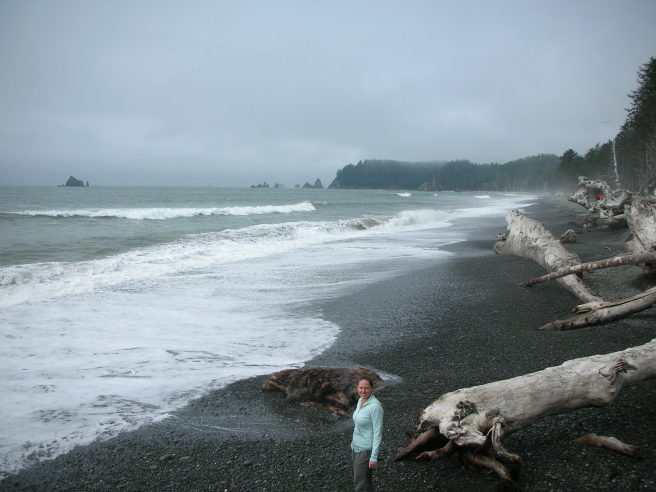
For fans of the vampire Twilight series there is also the town of Forks to see; we stopped only for lunch and in retrospect we’d recommend driving straight through!
Olympic also has rainforest…

…and elk.
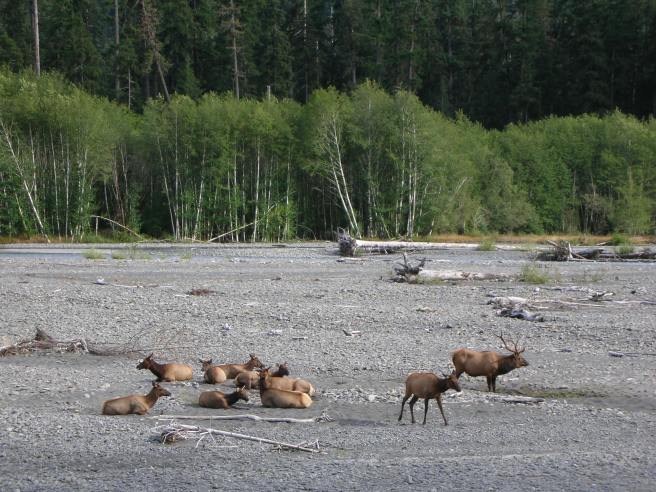

Some more fabulous photos – looks like you’re having a great time! Shame I didn’t know you were in La Paz – I’ve just got back from Bolivia and was in the city on Thursday and Friday. Hope your tummies prove more resistant to Bolivian cuisine than mine!
Paul
LikeLike
It would have been awesome to meet up, though we were in Sajama for those days so I don’t think it would have been possible. We seem to be surviving Bolivian food, at least better than we did in Ecuador!
LikeLike
Brings back fond memories of my childhood!
I gather you’re headed for Antarctica soon. What is Antarctican cuisine? Our book club must know! (Turns out Pym is not the most realistic of novels…)
LikeLike
Antarctic cuisine… well there is no indigenous culture there so we presume that the cuisine will be dictated mainly by what is available nearby. We guess lots of fish. Back in the day some pioneering explorers on antarctic missions that went wrong ended up eating their huskies… but Remus is probably not so keen on that suggestion!
LikeLike